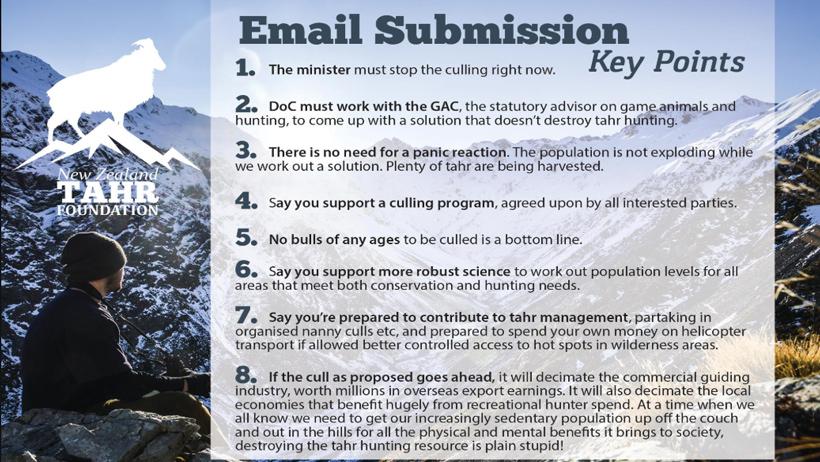





Photo credit: New Zealand Tahr Foundation
Due to an overabundance of Himalayan tahr, the New Zealand Department of Conservation (NZDOC) has announced a cull aimed at lethally removing 10,000 of them from public conservation land in the South Island over the next 10 months. The area targeted for tahr removal includes the Westland-Tai Poutini and Aoraki Mt. Cook National Parks. NZDOC’s decision is based upon data that estimates about 35,600 tahr roam this area, which is 25,600 more than permitted under the Himalayan Tahr Control Plan 1993, according to Newshub.
Hunters travel to New Zealand from all over the world, interested in hunting tahr. While roughly 4,600 tahr are harvested each year by hunters, NZDOC says that’s not enough to bring tahr into sustainable numbers, hence the proposed cull. The aim of the cull is to bring the tahr numbers down to 10,000, which were “agreed upon in 1993,” according to Newshub. However, the proposed cull has sparked anger among the hunting community who say that the mass cull is based on faulty science and is, essentially, an “eradication in disguise,” The Timaru Herald reports.
“DOC’s own science they are basing the cull on has been hastily gathered is statistically borderline, and puts the population at anywhere between 17,000 and 50,000,” New Zealand Tahr Foundation (NZTF) spokesman Greg Duley told The Timaru Herald.
"On top of the 3,000 they recently culled, they are proposing to cull another 17,500 outside Mt. Cook and Westland National Parks, and all the tahr inside the National Parks. This is potentially 25,000 to 30,000 tahr, when the population may well be as low as 20,000.”
The current proposal calls for the cull to include 30% of the bulls; however, Duley points out that the current data finds that bulls only account for about 16% of the population. Hence, Duley adds that “[w]hoever wrote the plan did not look at their own science.”
While tahr may need to be managed for overall habitat health, NZTF wants the proposal to include the New Zealand Game Animal Council, which advises the Minister of Conservation on game animal issues and protocol. NZTF argues that to simply hold a cull would be detrimental to the hunting economy within the country.
“Each bull tahr is worth $14,000 alone to the economy,” Duley told NewsNow. “In the first cull, they propose to shoot 3,000 tahr, if you do the maths, that's $42m worth of bull tahr left to rot on the hillside. That's just wrong.”
NZTF has launched a crowdfunding campaign that has already raised over 100,000 to fight against the cull. Interested in making your voice heard? Here’s a plan of attack outlined by NZTF to help you get started: